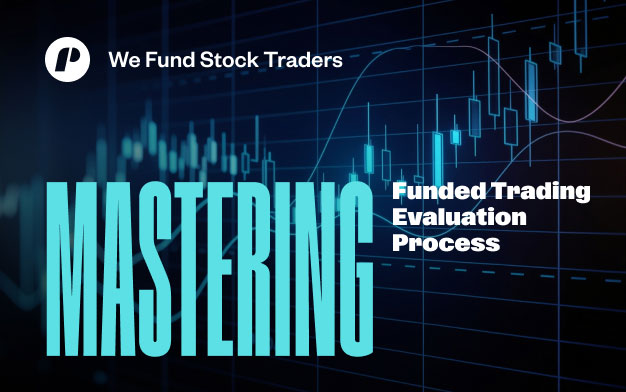
The financial market is a vast, competitive ecosystem. For every retail trader striving to turn a small account into something substantial, colossal institutions—the “smart money“—wield immense capital and superior technology. However, in this high-stakes arena, the battle isn’t always fair. The powerful forces don’t just trade; instead, they strategize. Crucially, they often orchestrate maneuvers designed to profit directly from the predictable behavior of the masses. This is the hidden hand of market manipulation in action. Therefore, to empower yourself as a retail trader, you must understand the mechanisms behind these deceptive plays. This guide focuses on a crucial defensive skill: recognizing and avoiding the smart money trap. By understanding institutional strategy, you can protect your capital and trade smarter than the smart money.
Key Notes:
- Understanding Smart Money Traps
- Pinpointing the Danger Zones
- How to Identify Smart Money Traps?
- How to Trace Smart Money?
- Practical Steps to Protect Your Capital
The Hidden Hand – Understanding Smart Money Traps
In the world of trading, we constantly engage in a competitive battle between the reactive retail trader and the proactive institutional player. The “smart money”—large investment banks, stock prop trading firms, and hedge funds—are the giants whose every move leaves a profound footprint. While the Smart Money Concept (SMC) teaches us how to follow these footprints, we must first learn to recognize the traps they set.
What is a Smart Money Trap?
Have you ever wondered what truly happens when a price breaks a key level only to reverse, leaving hundreds of traders trapped instantly? That deceptive market maneuver is precisely what we call a smart money trap. A smart money trap is a deceptive market maneuver orchestrated by large institutional players. Specifically, they design this move to trick retail traders into taking positions that are contrary to the market’s proper direction. Consequently, this action leads to losses for the retail trader and profits for the institutions.
The Strategy Behind the Trap
This maneuver is far more sophisticated than a simple “fakeout” or a random bad trade. Indeed, it is a calculated strategy that major players execute. Their primary goal isn’t malicious; instead, it’s logistical. Simply put, they need to acquire or distribute large quantities of an asset without significantly moving the price against their own trade. These traps are essential to institutional operation because they exploit predictable retail trading biases. For instance, these biases include the tendency to impulsively chase breakouts or set easily predictable stop-losses.
The Core Mechanism: Liquidity Creation
The core mechanism of the smart money trap is the strategic creation of liquidity. Therefore, institutions briefly push the price just outside a widely watched level. This action triggers a flood of retail orders (both stop-losses and impulsive new entries). Ultimately, this allows them to fill their massive positions at favorable prices. The resulting deception is a byproduct of their necessary market manipulation to execute colossal trades efficiently.
Pinpointing the Danger Zones: What is the Smart Money Trap Zone?
Understanding why institutions manipulate the market leads us to identify where they concentrate their efforts. This area of maximum risk for retail traders is known as the smart money trap zone. A smart money trap zone refers to a specific price area or range on a chart where institutional activity leads retail traders to enter or exit trades prematurely or incorrectly. Specifically, institutional activity like liquidity grabs, fake breakouts, or engineered pullbacks sets them up to be trapped. This zone is essentially a liquidity hotspot—an area where a high concentration of retail orders (stop-losses, pending limit orders) is known to be clustered. Therefore, these zones are inherently vulnerable to institutional exploitation. Their key characteristics include:
Significant Highs/Lows: The Stop-Loss Magnets
Prices just above major swing highs or just below major swing lows are prime targets for a smart money trap. Retail traders concentrate the overwhelming majority of stop-loss orders here, believing these are “safe” structural points. Crucially, institutions exploit this density. They execute a rapid sweep (or “wick”) through these levels, consuming the concentrated stops, which provides the necessary counter-liquidity for their enormous positions.
Obvious Support/Resistance: The Tested Illusion
Levels that have been tested multiple times and appear “obvious” to the average trader are perfect for a smart money trap. They attract both breakout traders and provide a precise location for stop-loss placement. Furthermore, institutional algorithms can easily identify these horizontal lines, recognizing them as zones where retail interest is highest. The multiple touches often create an illusion of unbreakable support or resistance, making the ultimate fake break even more convincing.
Trendline Liquidity: The Diagonal Trap
Trendline Liquidity refers to the orders resting just outside established diagonal trendlines. Retail traders use these visual aids for both entries and stops. Because of this, areas just outside prominent, easily drawn trendlines are frequently swept. The smart money knows that if a trendline has been respected several times, a mass of stops will be placed behind it, making it a high-probability target for a reversal fueled by those triggered stops.
Round Numbers: Psychological Anchors
Psychological price levels (e.g., 1.5000, 200.00) are often used as anchors for institutional market manipulation. They concentrate retail attention, thereby creating a denser pool of orders. These whole numbers act as a magnet and a psychological barrier. Institutions frequently push the price slightly past these levels to capture the clustered limit orders placed just above or below the round number, confirming the psychological trap.
Engineering the False Signal
Furthermore, institutions often engineer these smart money trap zones to create false signals. This involves a slight push above resistance to fake a breakout. Following this, a sharp reversal traps the retail traders who chased the initial move. This calculated action confirms that the market movers successfully used the retail crowd’s stops as fuel for their primary directional trade.

The Art of Detection: How to Identify Smart Money Traps?
Identifying a smart money trap requires shifting your focus from what the price is doing to why it is doing it. Consequently, you must analyze the institutional footprints left on the chart, which signal a deliberate act of market manipulation.
How to Identify Smart Money Traps?
To identify smart money traps, traders should look for specific patterns of institutional behavior. These patterns include liquidity sweeps, false breakouts/breakdowns, sudden reversals at key support/resistance levels, and divergences between price action and volume or order flow.
Here are the most practical, chart-based techniques to help you spot a smart money trap zone in action:
False Breakouts/Breakdowns
The most classic smart money trap occurs when the price briefly penetrates a key level (support, resistance, or a key SMC zone) and then quickly reverses, often within the same or the next candlestick. When analyzing such a move, look for an immediate reversal where the candle wick reaches outside the previous range. Crucially, the candle body must instantly close back inside—this rapid rejection of the high/low signals that breakout traders have been trapped.
Liquidity Sweeps (Wick Traps)
This is a direct form of market manipulation designed to gather orders. Therefore, when analyzing a chart, look for a sudden, rapid price movement that “sweeps” through a well-known liquidity area (the smart money trap zone). An aggressive, sharp reversal immediately follows this sweep. Long wicks on the candlestick characterize these moves. They show the price went up/down just long enough to “fish” for the stops before the institutions aggressively moved the price in their intended direction.
Volume Analysis (Divergence)
Volume provides the necessary evidence to confirm the conviction (or lack thereof) behind a price move. Consequently, this is a powerful method to identify smart money traps. For instance, a false breakout or a suspected smart money trap is often accompanied by low volume on the initial breakout attempt. This indicates that the large players were not truly participating in the directional move. However, when the price reverses and the real institutional orders begin to fill, volume will often spike significantly, confirming the trap.
Failure to Follow Through
A supposed trend reversal or breakout that lacks continued momentum is a key clue. If a price breaks resistance, and the next two or three candles barely move or immediately turn bearish, it strongly suggests the breakout lacked the Order Flow conviction necessary for an actual institutional move.
Tracing the Giants: How to Trace Smart Money?
Directly knowing what a hedge fund is doing in real-time is impossible for a retail trader. However, you can effectively trace smart money by observing the effects of their colossal trades—the footprints of market manipulation they leave behind.

How to Trace Smart Money?
Tracing smart money involves analyzing institutional footprints on charts. This analysis uses tools like volume analysis, open interest (for futures/options), order flow indicators, and the identification of areas of high liquidity where large orders are likely to be placed or triggered. Ultimately, tracing smart money is about understanding that price moves result from large-scale supply and demand imbalances, which often stem from pre-planned market manipulation.
Volume Spikes at Key Zones
Unusually high volume occurring specifically at support/resistance zones or after significant price displacement signals considerable institutional participation. This is a critical footprint because large orders cannot be hidden; they must be filled. This high volume indicates a period of accumulation or distribution, not a random retail flurry. Crucially, when a strong price reversal occurs on low volume, it signals a lack of institutional conviction in the new direction, suggesting the movement is merely a smart money trap.
Commitment of Traders (COT) Report
For traders who monitor futures and related markets, the COT report, published weekly by the CFTC, provides a high-level view of how commercial and non-commercial traders are positioned. While the COT is not a real-time execution tool, it offers macro-level evidence of how large players position themselves over time. Use it to confirm structural bias and to understand where institutional interest is building or fading; then align shorter-term SMC analysis with that broader context.
Smart Money Concept (SMC) Zones
Identifying unmitigated order blocks, significant fair value gaps (FVGs), and previous strong rejection zones is an indirect way to trace smart money. These are the chart areas where institutions previously exerted overwhelming force, leaving identifiable footprints of their activity. Price tends to return to these zones to “mitigate” or to fill remaining orders. Understanding these zones helps predict future turning points and acts as a defensive barrier against smaller, local manipulations.
Accumulation/Distribution Patterns
Observational frameworks like the Wyckoff method—kept practical and straightforward—show areas where large buyers or sellers are quietly building positions over time. These slow, sideways periods of high-volume consolidation indicate that smart money is gradually accumulating assets (buying) or distributing assets (selling) before a significant markup or markdown. Recognizing these patient pre-trend footprints allows you to align with the institutional direction before the public notices.

Avoiding the Snare: Practical Steps to Protect Your Capital
Knowing how to identify smart money traps is only half the battle; the other half is cultivating the discipline to avoid them. By adopting a defensive and critical mindset, you can protect yourself from the costs of institutional market positioning.
Confirmation is Key
Never enter a trade solely on the first signal. Always wait for explicit confirmation after a potential smart money trap has occurred. The most reliable confirmation involves waiting for the price to retest the broken level and show a clear rejection before entering. For example, observe a bullish engulfing candle or a strong rejection wick on the retest of old resistance now acting as support. An actual institutional directional move often shows conviction on the retest.
Use Stop-Loss Orders Strategically
The location of your stop-loss is critical. Placing it directly at obvious swing highs or just below obvious swing lows often gives your money away in a smart money trap zone. Instead, place stops outside the obvious liquidity—strategically beyond the area where a liquidity sweep is likely to occur (for instance, beyond the extreme of an order block or well beyond the visible wick structure).
Avoid Trading at Obvious Liquidity Points
Be cautious around areas where many retail stop-losses are likely to be clustered. If a level looks too clean, too obvious, or has been touched precisely multiple times, assume it is a probable target for a liquidity sweep and wait for the resulting manipulation to complete before deciding.
Focus on Higher Timeframes
Smart money traps are most transparent and most frequent on lower timeframes (M1, M5, M15). While these traps can cause local damage, they are often noise relative to the macro trend. Base your overall directional bias on the Daily or 4-Hour chart. A trap on the 5-minute chart is easily avoided if the 4-Hour or Daily chart shows strong institutional conviction.
Understand False Breakout Candlesticks
Train your eye to recognize reversal patterns that commonly follow traps: pin bars (long wicks) that reject a level, strong engulfing patterns that confirm the reversal after a supposed breakout, and quick wick-and-reverse candles that sweep stops and then flip direction.
Manage Emotions and FOMO
The most significant factor in falling for a smart money trap is the fear of missing out (FOMO) when the price appears to break out. Avoid impulsive trades during initial breakouts. The best trades often come after the smart money trap has played out, the retail stops are consumed, and the market resumes the institutional direction. Practice patience and remind yourself that waiting for confirmation is itself a trading edge.
Closing Thoughts: Trading Smarter Than Smart Money
Understanding smart money traps is the final, essential layer of SMC education. It’s the shift from simply identifying price points to understanding the strategic intent behind every move. You now know that what appears to be market manipulation is often the logistical reality of how large participants enter and exit sizable positions. By learning how to identify smart money traps, recognizing the vulnerable smart money trap zone, and demanding strong confirmation before entry, you transform yourself from a market participant into a market observer. Ultimately, this disciplined, defensive approach is the ultimate tool for capital preservation and consistent profitability. Trade with vigilance, patience, and unwavering respect for the giants who move the market.
If you liked this post make sure to share it!







